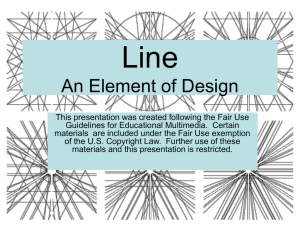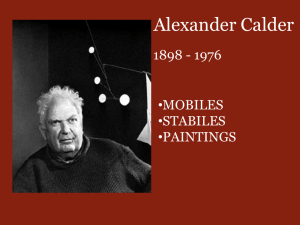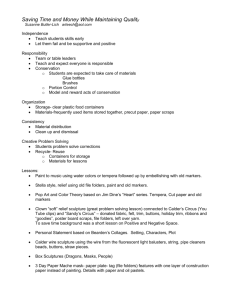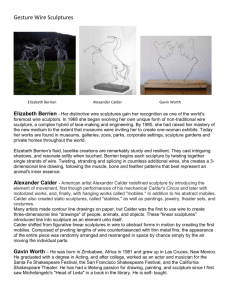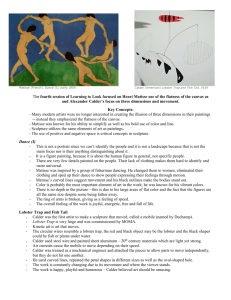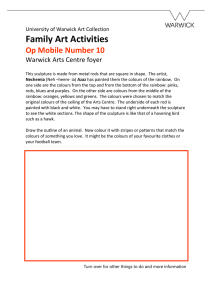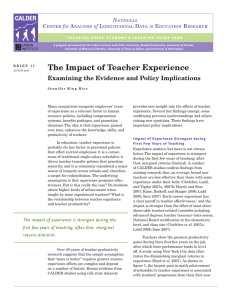Alexander Calder: Artist, Abstraction, and Key Works
advertisement
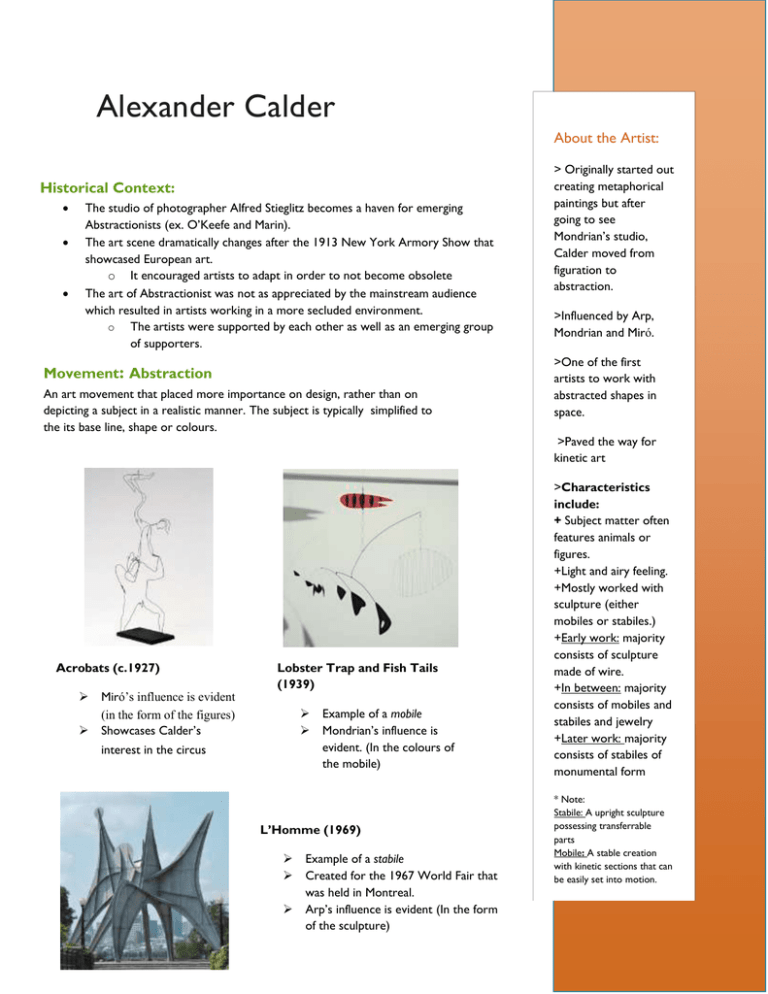
Alexander Calder About the Artist: Historical Context: The studio of photographer Alfred Stieglitz becomes a haven for emerging Abstractionists (ex. O’Keefe and Marin). The art scene dramatically changes after the 1913 New York Armory Show that showcased European art. o It encouraged artists to adapt in order to not become obsolete The art of Abstractionist was not as appreciated by the mainstream audience which resulted in artists working in a more secluded environment. o The artists were supported by each other as well as an emerging group of supporters. Movement: Abstraction An art movement that placed more importance on design, rather than on depicting a subject in a realistic manner. The subject is typically simplified to the its base line, shape or colours. Artworks: Acrobats (c.1927) Miró’s influence is evident (in the form of the figures) Showcases Calder’s Lobster Trap and Fish Tails (1939) interest in the circus Example of a mobile Mondrian’s influence is evident. (In the colours of the mobile) L’Homme (1969) Example of a stabile Created for the 1967 World Fair that was held in Montreal. Arp’s influence is evident (In the form of the sculpture) > Originally started out creating metaphorical paintings but after going to see Mondrian’s studio, Calder moved from figuration to abstraction. >Influenced by Arp, Mondrian and Miró. >One of the first artists to work with abstracted shapes in space. >Paved the way for kinetic art >Characteristics include: + Subject matter often features animals or figures. +Light and airy feeling. +Mostly worked with sculpture (either mobiles or stabiles.) +Early work: majority consists of sculpture made of wire. +In between: majority consists of mobiles and stabiles and jewelry +Later work: majority consists of stabiles of monumental form * Note: Stabile: A upright sculpture possessing transferrable parts Mobile: A stable creation with kinetic sections that can be easily set into motion. Gershman, Rachel. “Alexander Calder”. TheArtStory.org. The Art Story Foundation. n.d Web. December 1, 2014. “Alex Calder’s Sculpture titled “L’homme” (The Man) in Montreal”. Atrsology®. n.p. n.d. Web. December 7, 2014 Calder Foundation. Calder Foundation. Web. December 7, 2014. Brommer, Gerald F. Discovering Art History. Worcester: Davis Publications, Inc. 1997. Print

